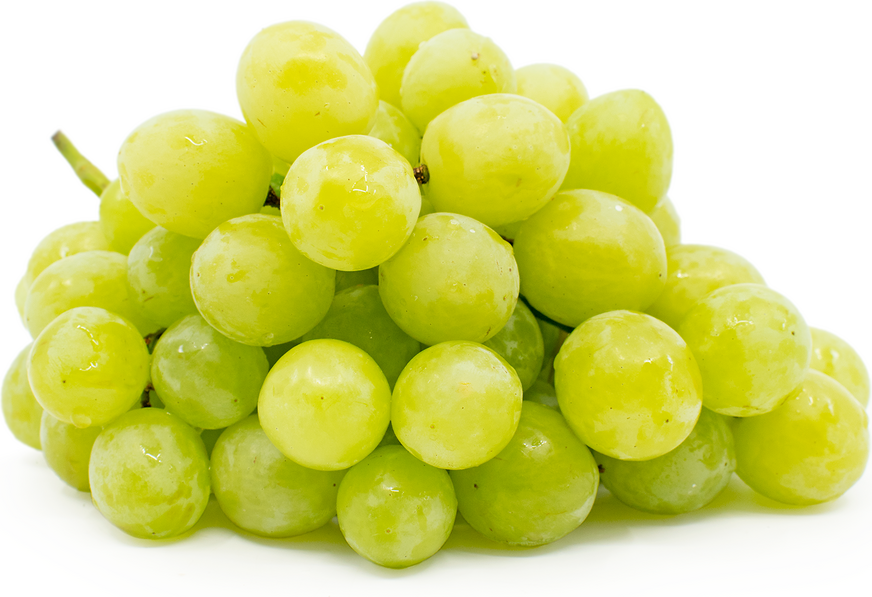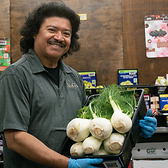


Valley Pearl Grapes
Inventory, 2 lb : 0
Description/Taste
Valley Pearl grapes are large in size and are round to slightly oval in shape, growing in large, dense, conical shaped clusters. The smooth, medium to thick skin is pale green and adheres firmly to the flesh. The translucent green flesh has a firm and meaty texture and is considered to be seedless, though a few undeveloped seeds may be present but are undetectable when consumed. Valley Pearl grapes are crisp and juicy with a sweet, neutral, muscat flavor and a moderately low acid content.
Seasons/Availability
Valley Pearl grapes are available in the summer through fall.
Current Facts
Valley Pearl grapes, botanically classified as Vitis vinifera, are an early to mid-season ripening, seedless green berry. Originally created by the United States Department of Agriculture’s Agriculture Research Service (USDA-ARS) to provide consumers with a large, seedless white grape variety, Valley Pearl grapes are a cross between a seedless white grape that exhibited a slight muscat flavor with another early ripening variety that had round berries with medium skin and medium firm flesh. The resulting Valley Pearl grape is a neutral table grape that is sweet and juicy and is known for its consistent and high production rate.
Nutritional Value
Valley Pearl grapes contain vitamins A, C, and K, which can help boost the immune system
Applications
Valley Pearl grapes are best suited for both raw and cooked applications such as boiling and roasting. They were created to be a table grape and are most often consumed fresh, out-of-hand. The grapes can also be roasted and cooked down into sauces and jams or sliced, roasted, and tossed into green salads, pasta salads, bean salads, and fruit salads. The sweet yet musky flavor of Valley Pearl grape juice mixes well for cocktails and wine spritzers. Valley Pearl grapes pair well with chicken, seafood, cottage cheese, goat cheese, honeydew, strawberry, celery, green onion, mint, yogurt, and barley. Valley Pearl grapes will keep up to one week when stored in a perforated plastic bag in the refrigerator.
Ethnic/Cultural Info
Valley Pearl grapes represent one of the many varieties that were created and bred specifically in California for table grapes. The Agriculture Research Service in Parlier, California works year-round to develop new varieties to meet consumer demand for quality table grapes that are available throughout the season from May to November. Valley Pearl grapes are one of the newest varieties created by the ARS and were bred for improved production rates, large size, and seedless quality.
Geography/History
Valley Pearl grapes were created in 1996 by Dr. David Ramming, a research horticulturist, and Ronald E. Tarailo at the Agriculture Research Service (ARS) in Parlier, California. Valley Pearl grapes were not released to the public until 2013 and were given to the California Table Grape Commission to license out both domestically and internationally. Valley Pearl grapes can be found at specialty markets across the United States.








